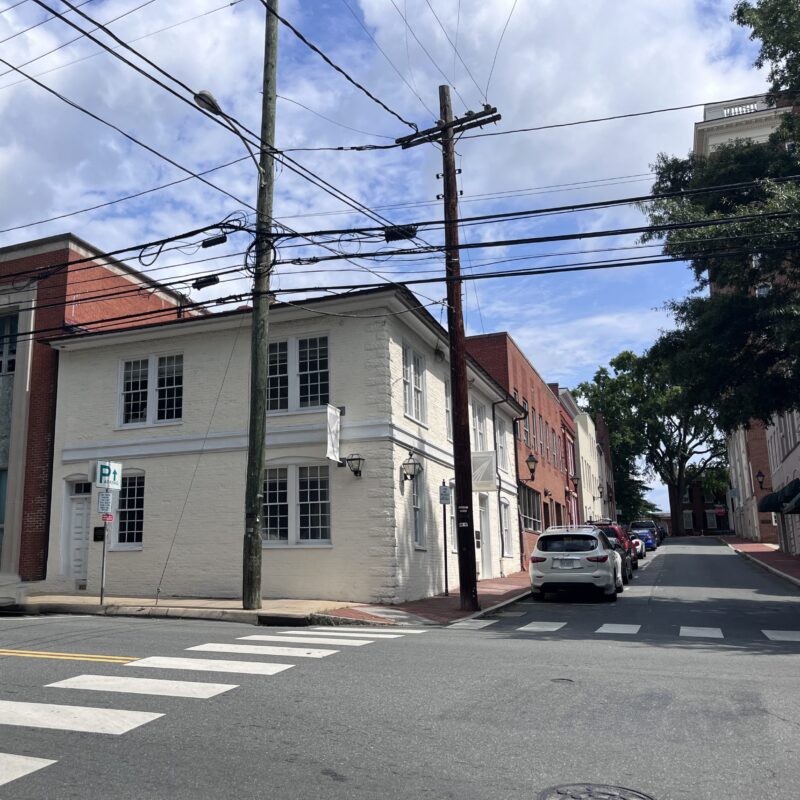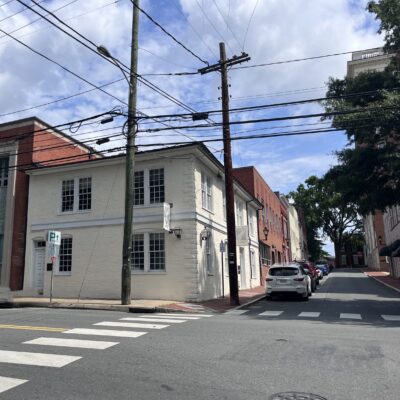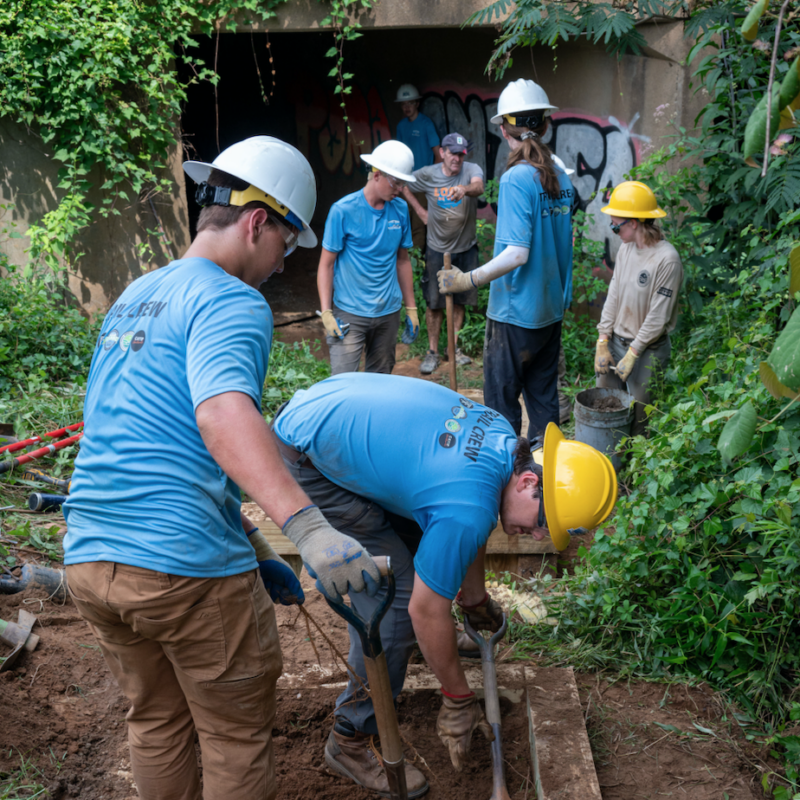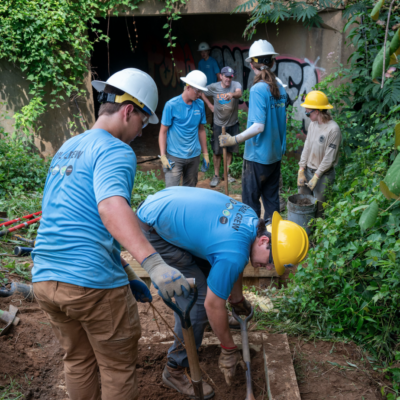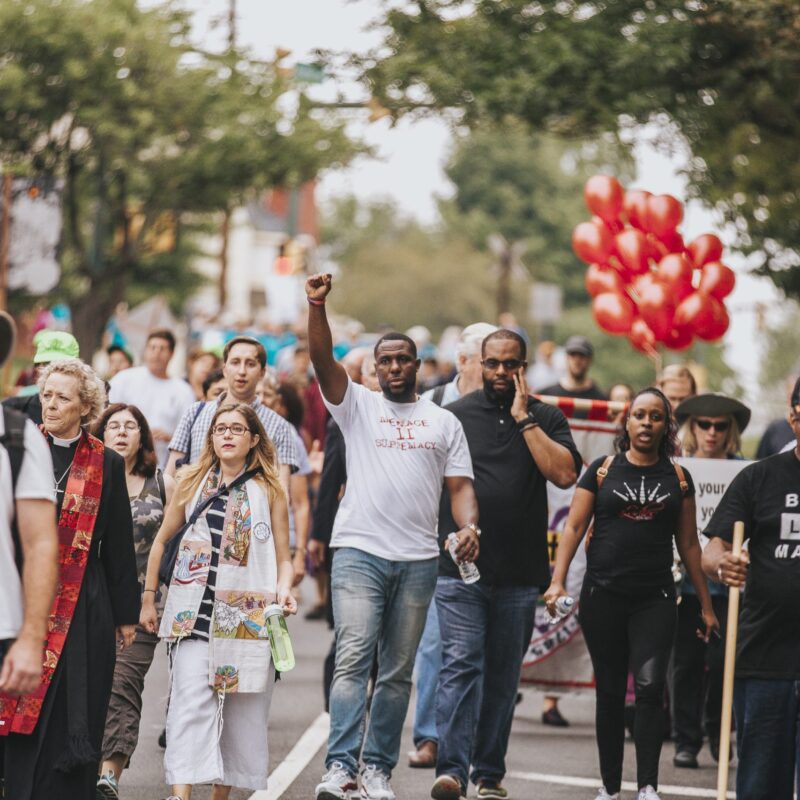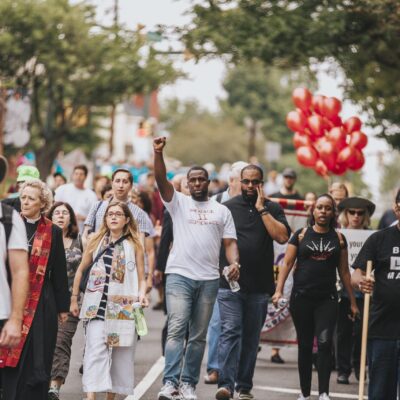In 2007, following a stint on City Council that included a term as mayor, Maurice Cox took a break from the University of Virginia architecture faculty to become design director at the National Endowment for the Arts. An outspoken advocate of urban planning, increased density and improved public transit options while on Council, Cox leaves the NEA at the end of this month with the coveted Edmund N. Bacon Prize, which rewards leading advocates of urban development, planning and design. With this prize, Cox joins architect Robert A.M. Stern and Pulitzer Prize-winning architecture critic Paul Goldberger, among others. We checked in with Cox mid-transition.
|
UVA Professor and former Charlottesville Mayor and Councilor Maurice Cox has received the Edmund N. Bacon Prize, which rewards leading advocates of urban development, planning and design. In 2007, Cox became design director at the National Endowment for the Arts (NEA). Now, Cox is returning to Charlottesville and continuing his teaching at the School of Architecture. |
On receiving the Bacon Prize: The idea of someone like Edmund Bacon who is largely responsible for Philadelphia as we know it as a majestic city that has been able to respond to each trend in urban design…to be honored by the legacy that he created was surprising and rewarding and made me feel I’m on the right track.
On joining the NEA under George W. Bush and leaving under Barack Obama: What a transformation that is underway! This administration is talking about policies that are place-based that work from the localities up and are trying to marshal all of the resources of the federal government to shift public policy towards making place. I can’t tell you how transformational this is.
The idea that the federal government is aligning resources to give to localities based on their capacity to respond to place-making—those are terms we understand in urban planning, but we’ve never seen that coming from the White House. I think it’s going to shift the focus to communities being at the table to find solutions for themselves and the federal government simply supporting them financially as they do it. So it’s a page out of what the Obama campaign ran on.
For example, one of the things they’ve done is they’ve formed a partnership between Housing and Urban Development, the Department of Transportation, and the Environmental Protection Agency around a set of livability principles. This is the first time that three fed agencies have been directed to reorganize their financial assistance around the lines that support livability and sustainable cities. Where the NEA fits into that, one of our leaders programs, the Governors Institute on Community Design, was asked to hold the first summit for those federal agencies where we discussed how they can reorganize their enormous budget to support livability of cities.
The idea, for instance, that the Department of Transportation would be guided by a set of livability principles that say more transportation choices, equity in affordable housing, economic competitiveness, and ask how do we support existing communities and how do we leverage the federal policies and investment to value communities and neighborhoods—that in a nutshell is what the Obama Administration has directed us to do and it is without precedent.
On working with the NEA’s Mayor’s Institute on City Design: Without question the gem in the crown of the NEA. Eight hundred mayors have gone through this program. Amazing to sit in the room with mayors and some of country’s best designers and have them see them finally understand how they can use the built environment as a venue for their leadership agenda. Quality design equals quality of life. And they get it. And they go out as advocates for better quality design in their cities. They hire better design professionals and they engage their communities in real discussion about what their shared values are. To see that process unfold dozens and dozens of times has been enormously rewarding.
I was also fortunate to create a program to follow mayors when they went back home, and took a small group of design professionals with them and facilitated a community visioning process in each one of those cities. We began to see mayors have real stepping stones for delivering on projects that have the potential to be transformative.
The other part that has been really satisfying has been to watch design as an art move to center stage at the National Endownment. This is really going to become evident to people as they watch this new administration under Rocco Landesman take hold. He’s talking about the many ways that art works. How it works as an economic driver for communities, how it works within how people perceive their communities, and how it works in terms of the various forms that it takes. He has a very bottom-line notion of the many ways in which art works and how we can use it to drive the economic recovery of this country.
On transforming West Main Street into a physical and metaphorical link between the city and the university, a goal he advocated as Mayor: A city simply can’t afford to sit on its accomplishments and consider itself a progressive city and look out onto West Main Street and see that its potential has yet to be filled. I’ve worked with 75 mayors in these past two years and I can tell you that many of those cities have far fewer assets, but they are so hungry to go from good to great that when I come back to Charlottesville, I’m always somewhat taken aback by the sense of self-contentment that can set into a city that has been proclaimed already as a great American city.
There is a lot of work to be done and there are a lot of people who are capable of doing it. I look forward to the chance of having that conversation with our elected civic leaders. It’s actually time for action. We’ve done so many plans for West Main Street; we’ve changed the rules of development. The thing that has stalled making progress on this work has been the inability to take a bold direction with regard to transportation. I think the boldest idea I was exposed to and teed up for Charlottesville was the idea of an urban streetcar that would connect our Downtown to UVA. I still think that will be the turning point for West Main Street. It’s a big transformative vision that takes an enormous amount of community will to execute. But I’m seeing cities not unlike Charlottesville that are taking it on.
On bringing the NEA experience into the classroom: I’ve always used the city as the laboratory for students learning and I anticipate accelerating a strategy of direct engagement with real problems, because students have the ability to be inspired by that. I want them to be exposed to the multiple voices that make and shape the city.
One of things that has been most transformative at the NEA is the cross-disciplinary nature of what I do. So now I’m working with people in arts education, in dance, in theater, in visual arts as a matter of course every day. And when I assemble a team to advise the mayors they include landscape architects and economic specialists and transportation planners, and it underscores the nature of solving problems that it requires a broad cross-section of skills at the table. I’m not interested in a conversation of architects talking to architects. I’m interested in cross-fertilization.
What if you invite a dancer, what if you invite a land use attorney to solve a problem, say, about home foreclosure? What kind of thinking is unleashed? I don’t think I had as broad exposure to this way of thinking before this time at the Endowment.
On changes in Charlottesville in the past two years: The pace of change seems to have slowed down. The creative friction that seemed to characterize my time on Council seems to have dissipated. And I never thought I’d see that happen.
On changes at UVA: The biggest change is preparing for a new generation of leadership at the top. With John Casteen retiring, there is an opportunity to renew, rethink and update what UVA is in the larger Charlottesville community. I’d say, Go west, university. Embrace the urban core of Charlottesville and recognize that West Main Street is probably the quarter that will direct you to a much more vibrant and engaged community.
C-VILLE welcomes news tips from readers. Send them to news@c-ville.com.

